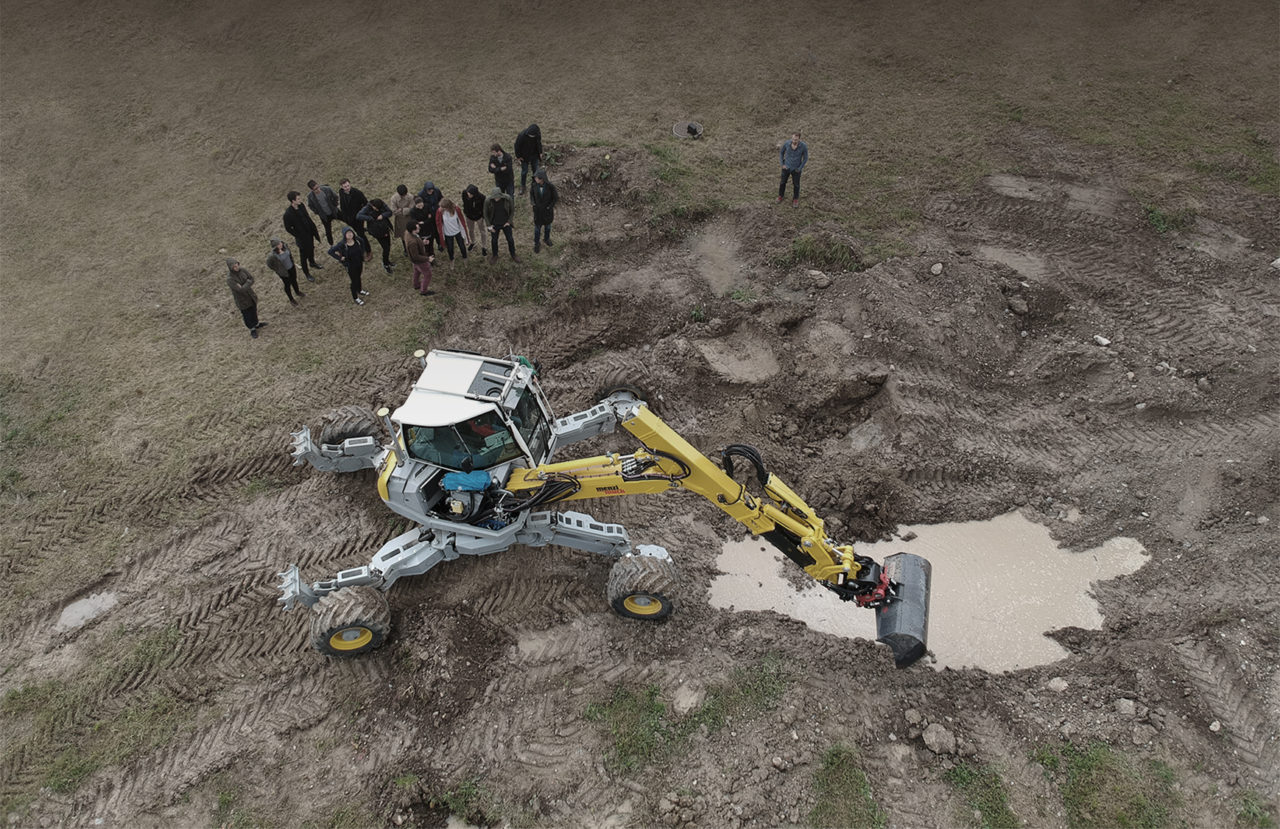
By investigating the potential of on-site robotic construction and grading methods, students explore the design space for robotic terrain modeling in hazard landscapes in responds to droughts, floods and landslides. Using state of the art terrain modeling methods combined with the simulation of dynamic natural processes, the studio investigates a new topological approach to contemporary landscape architecture.
Recent methods in designing, modeling, and visualizing terrain are developing exponentially through the advancement of digital technologies. Advanced digital modeling tools based on point cloud surveys have made it possible to explore and experiment with the potential of digitally designing, simulating and prototyping large scale landscapes.
However, the potentials of robotic construction in the field of landscape architecture are not fully exploited. In the context of the Design Studio «Robotic Landscapes» of the ETH Zurich, the Chair for Architecture and Digital Fabrication and the Chair of Landscape Architecture have built up a unique design studio to investigate concrete scenarios for large scale application of digital design and robotic construction.
As a primary outline of our Design Studio we attempt to offer a powerful methodology in the field of landscape architecture through robotic principles and procedural design solutions. In exploring unconventional modeling techniques during the design process, students creatively develop new topographic solutions in order to create resilient landscape projects in challenging environments. They investigate new landform typologies focusing primary on typological studies, learn to operate a robot arm that interacts with sand and gravel, and understand fundamental principles of computational design, simulation and robotic fabrication.
A Computational Response to Natural Hazards
The expanding potential of computational tools, combined with the increasing digital capabilities of the design students increases the scope of design thinking and making in our studio. This results in fundamental implications on landscape design: the ability of a student to visualize and generate complex forms and surfaces and to respond directly to natural processes (like geophysical, hydrological and climatological processes or hazards). Our distinct interest lies in merging the field of computational design as well as digital fabrication techniques with the design and construction approaches of the students at the beginning of their design process.
In 2017, we studied the robotic manipulation of local topography to create a new linear landscape park and sound barrier along the A2 motorway in the lower Valle Riviera, Ticino. The goal of the studio was to define a new landscape topology with regard to acoustic performance through robotic fabrication. The past semester is a provoking example of how we worked with precise topographic structures at various stages, phases and scales over time with a high degree of parametric accuracy. Until the end of 2018, we are working on the second iteration of the studio developing resilient terrains in response to landslides evoked by melting permafrost.
The Robotic Landscapes design studio is an annual collaboration between the Chair of Landscape Architecture of Professor Christophe Girot and the Chair of Architecture and Digital Fabrication of Professor Fabio Gramazio and Professor Matthias Kohler of the Department of Architecture at the ETH Zurich.
Ilmar Hurkxkens is PhD Researcher at the Chair of Landscape Architecture of Professor Christophe Girot and part of the NCCR Digital Fabrication. Fujan Fahmi is Research Associate at the Chair of Landscape Architecture of Professor Christophe Girot.